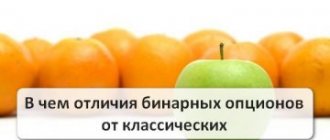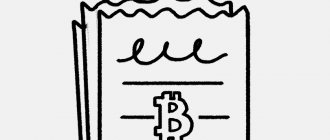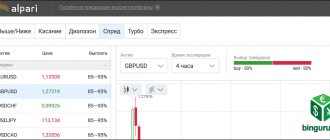Basic moments:
- A little history
- Contract parameters
- CALL and PUT options
- Closing positions
- Concept of intrinsic and time value
Options are financial instruments with a long history, but less known and popular among a wide audience. They can open up a whole new world of endless possibilities for investors. The range of their applications is huge, the unique strategies are varied, no other tool can compare with such versatility. This instrument also has the other side of the coin - limited liquidity of the options market , which must be taken into account.
An option is a contract that gives the right to buy or sell an underlying asset at a set price within a specified period of time.
For this instrument, the fundamental factors on which all strategies are based are a fixed price and time.
There are two types of options:
- CALL option - a contract in which the owner receives the right to buy an asset at a set price;
- PUT option is a contract that gives the right to sell an asset at a certain price.
What is an option
An option, like a futures, is a derivative financial instrument and is traded in the derivatives section of the stock market.
In simple terms, an option is a contract concluded for a certain period, under the terms of which the buyer has the right to buy or sell the underlying asset (BA) at a predetermined price (strike price). For this right, the buyer pays an option premium to the seller (the premium coefficient is usually 5-10% of the price of the underlying asset).
If the contract validity date has arrived (it is called the expiration date or the option exercise date), then the buyer may exercise his right to buy/sell the asset (or may not exercise it). The seller is obligated to exercise the option if it is presented for exercise.
It is easier to explain the essence of options using an example.
Let's say you find a great apartment that you want to buy. But you need time to collect documents and apply for a mortgage for 2 million rubles. Therefore, you pay the seller a deposit in the amount of 5% of the cost of the apartment (100 thousand rubles) with the condition that he will not sell it to anyone in the next 2 months, and also will not change the transaction price, no matter what happens on the market. Those. Essentially, you are buying a call option with a 5% guarantee and an expiration date in 2 months.
What could happen next? The price of the apartment has increased from 2 million to 2.5 million. You are exercising your right to purchase an apartment for 2 million rubles. You are in the black, the seller is in the minus (he could get 500 thousand more for the apartment). In fact, you have insured (hedged) your risk against an increase in the cost of the apartment.
The second option is that the apartment has dropped in price to 1.5 million rubles. You had the right, not the obligation, to buy an apartment, so you refused to fulfill your obligation. As a result, you lost the previously paid 100 thousand rubles (option premium), but were able to buy a similar apartment for 1.5 million rubles, ultimately saving 400 thousand rubles. The seller earned 100 thousand rubles, but missed the opportunity to sell a cheap apartment at a higher price.
Essentially, every time you pay upfront for something, you are entering into an options contract. You acquire the right to buy some property (asset) for an agreed price within a certain period. If you refuse, you lose the option premium.
Real options should be distinguished from binary options - the latest casinos and rip-offs. Real options are traded on the derivatives section of the Moscow Exchange (FORTS - futures and options PCT) and with them everything is not so simple.
Of course, there are real binary options too. They are traded on the CBOE (Chicago Board Options Exchange), their underlying assets are the VIX volatility index and the S&P500 index and are available for purchase only to qualified US investors. Those. Mere mortals certainly don’t have access to them.
Options are based on the underlying asset. There is no abstract option - there is an option on stocks, index, gold, futures, swaps and even other options. Options with the underlying asset on the futures are traded on the Moscow Exchange, and the underlying assets of the futures are stocks, index, gold, volatility, etc. Yes, it sounds a little complicated: an option on futures on Gazprom shares. But that's how it is =)
State control procedure
The activities of joint stock companies, which relate to the issue and circulation of option instruments, are subject to control by authorized bodies and are regulated by law.
All stages of the operation of option agreements are subject to supervision.
The issue of options takes place in several stages:
- The Board of Directors meets. A decision is made on the issue of option contracts. A meeting of shareholders may also be granted this right if it is specified in the Charter.
- The period during which the contract can be converted into shares is established, and the period after submission of the application allotted for the procedure.
- Information about the planned release is transmitted to regulatory authorities.
- Options are distributed among future owners.
- When the issued assets are distributed among buyers, the joint stock company reports to the body authorized to exercise control.
How options came to be
The first options appeared during the Roman Empire, when traders from Rome entered into agreements with the Phoenicians to deliver goods at a certain time at a certain price. This made it possible to insure against the risk of changing weather conditions, another war with Carthage, or pirate raids. Moreover, an option contract was a document that was concluded in one place by some traders, and was executed (or not executed) in another - the actual place of shipment and loading of goods.
But then it was not called an option. The term “option” itself appeared in Holland during the tulip fever - the famous financial bubble of the 17th century. Gardeners (suppliers of goods) bought put options from sellers on the market, allowing them to sell tulips at an agreed price on a certain date, for example, 100 guilders in June.
Buyers (speculators) bought call options, which allowed them to hedge against the risk of price increases. For example, they acquired the right to buy tulips in May for 80 guilders. Due to the difference between the selling price in June and May, numerous speculations were carried out, so much so that the delivery of real goods did not occur - unsecured pieces of paper circulated on the market.
As a result, everything resulted in a crisis worse than the current one, the Dutch economy fell into ruins, and the entire civilized world decided that what the hell were options, and they were banned as a stock exchange instrument.
The ban was lifted only in 1872, when the United States, at the request of numerous capitalists, allowed the trading of arbitrary options on a special section of the Chicago Stock Exchange.
And here’s another interesting article: What is risk hedging in simple words and with examples
After the Great Depression of 1929-1939, options became widely used by industrialists to hedge their risks, so that the US Securities and Exchange Commission (SEC) was forced to introduce controls on options.
As a result, in 1973, all options were brought to a single standard and placed on separate sections of the exchange for trading. The “main” exchange for options trading was also appointed - Chicago (CBOE). Now the parties did not need to agree on the volumes, amounts and timing of transactions - everything was already included in the specification (option description). It is enough to buy (or sell) a suitable option.
Options were allowed to be sold not only by individuals, but also by investment banks, hedge funds, and insurance companies, which significantly expanded the scope of their application.
Now the options market in volume exceeds the capitalization of the stock market by 1,500 times or even more - it is not possible to calculate the exact volume of all derivatives contracts concluded, by any means at all.
A little history
Initially, this instrument was used as a means of protection, hedging and as an insurance policy. Farmers and buyers of agricultural products needed such contracts to avoid losses from negative price changes.
An option differs favorably from other derivative instruments in that it allows its owner, if conditions become unfavorable, not to execute the contract. Participants in trade transactions appreciated the benefits and opportunities of such contracts. Over time, options for metals, oil, and stocks appeared.
These instruments began trading on the exchange in 1973 with the opening of the Chicago CBOE Options Exchange.
How put and call options work
What types of options are there? There are two major classes: put and call. What is the difference?
A call option gives the option buyer the right to purchase the underlying asset at a specified price. For example, now Gazprom costs 220 rubles and the buyer is afraid that Gazprom will rise in price even more. But the money to buy Gazprom will only be available in 2 months. Therefore, the investor buys a call option for 10 rubles and secures the right to buy Gazprom in 2 months for 220 rubles. In reality, the numbers for operations will be different, but here I am simplifying everything to understand the essence of the options transaction.
Then there are three possible scenarios:
- Gazprom has risen in price to 250 rubles. The investor exercises his call option and buys the required amount of shares for 220 rubles.
- Gazprom turned out to be cheaper than 220 rubles and collapsed to 180. The investor does not exercise the option, loses the option premium of 10 rubles, but buys the required amount of shares at a cheaper price.
- Gazprom remained at the level of 220-230 rubles, for example, the price rose to 225 rubles. Here the buyer is at a disadvantage, but can act at his own discretion. An option premium was insurance in case of a sharp increase in the value of an asset. In any case, the seller of the option will remain in the black: he will either retain the option premium of 10 rubles, or sell Gazprom shares at the market price and still retain the option premium.
Now let's look at an example of a put option. It gives the buyer the right to sell the asset at a certain price. For example, an investor expects that Gazprom shares, which currently cost 220 rubles, may fall in price. But selling them cheaper is not part of his plans, so he insures himself against a price drop by buying a put option, according to which he has the right to sell his shares for 230 rubles (i.e., the current price + the option premium of 10 rubles).
Then there are three possible scenarios:
- The price of Gazprom shares goes below 220 rubles, for example, falls to 180 rubles. The investor exercises his option and sells his shares for 220 rubles. The seller of the option is at a disadvantage: he is forced to buy the asset at a higher price than the market price.
- The price of Gazprom shares goes above 220 rubles, for example, up to 250. The investor simply does not exercise the option, losing 10 rubles of premium, but sells the shares at the market price, having a profit of 30 - 10 = 20 rubles from each share.
- The price of Gazprom shares remained in the range of 210-220 rubles. Then the buyer of the option can exercise the option if the price is below 220 rubles, or not exercise it. The seller of the option will be in the black in any case. He will either retain the option premium of 10 rubles, or buy Gazprom shares at the market price and still keep the option premium.
The option is usually (but not always) exercised through cash settlement, i.e. the buyer makes a profit from the difference between the market (spot) price and the contract price (strike price). In this regard, a call option corresponds to a long position in the underlying asset (long), and a put option corresponds to a short position (short).
Release rules and penalties
There are several provisions that must be taken into account by a joint stock company wishing to issue issuer options.
- Such actions are possible only in a situation where the company’s authorized capital is fully paid.
- The volume of issued securities must not exceed the number of free shares.
- The number of shares expected to be sold during the conversion of the issued options of the issuer should not exceed 5% of the amount of funds forming the authorized capital of the joint-stock company.
- The owner of the security in question has the right not to convert it into shares. The company should not force him to such action by any means or means.
Failure to comply with any of the above provisions will subject the issuer to penalties. In some cases, these option agreements may be voided. In such a situation, the entire amount of expenses incurred by their owners is obliged to reimburse the joint-stock company itself.
Options risks
Even though options trading appears to be safe and extremely profitable on the surface, there are actually risks involved. Moreover, they are pledged mainly for the seller, i.e. the one who sells the option. The option buyer's losses are limited by the amount of the premium - i.e. he may not buy the option if it is unprofitable.
For the seller, the exercise of the option is mandatory if the buyer makes such a demand. Therefore, his profit is limited by the option premium, but his loss is not limited.
For example, an investor sold a put option with the following conditions: the spot (market) price of a Gazprom share is 220 rubles, the strike price is also 220 rubles, and the option premium is 10 rubles. For an investor, it is important that the price of the asset goes as high as possible to 220 rubles: then the option will not be executed, and the investor will earn an option premium.
Here's another interesting article: How to invest in gold: 7 ways
However, Gazprom falls to 160 rubles, and the buyer of the option decided to exercise it, i.e. he forces the option seller to buy Gazprom shares from him at 220 rubles. Loss of the option seller: 160 – 220 + 10 = –50 rubles.
Thus, the lower the price of the underlying asset, the higher the loss to the seller of the put option.
Therefore, it is better not to engage in short selling of options, even if you are confident in the growth of the asset - at least at first, until you have sufficient experience.
Taking advantage of guesswork
Options contracts give buyers the opportunity to obtain a significant portion of shares at a relatively small price. When used individually, they can provide significant returns if stocks rise. But they can also result in a 100% loss of premium if the call option expires worthless due to the underlying stock's price failing to rise above the strike price. The advantage of buying call options is that the risk is always limited to the premium paid for the option.
Investors can also buy and sell different call options at the same time, creating a call spread. They will limit both the potential profits and losses from the strategy, but in some cases are more cost-effective than a single call option because the premium received from selling one option offsets the premium paid for the other.
Types of options on the Moscow Exchange
Exchange options by type of redemption are:
- American – repayment is made at any time before expiration at the request of the buyer;
- European – repayment is made exclusively on the expiration date.
There are also Asian options - redemption is made at any time, but the calculation is based on the average price of the underlying asset over a specified period of time.
According to the type of calculation, the following options are distinguished:
- with payment of premium – final settlement is made on the day the option is exercised;
- margined – the option premium is gradually debited in the form of margin from the account of the buyer/seller of the option.
All options traded on the Moscow Exchange derivatives section are American and margined.
The underlying assets are:
- oil;
- gold;
- silver;
- RTS index;
- U.S. dollar;
- volatility;
- individual shares.
At the same time, most options do not survive until the expiration date, but are executed earlier. Most are non-delivery, i.e. the trader receives only money as his reward.
Continuous barriers
The most real exotic options are barrier options.
In such options there is a barrier, but unlike European barriers, which apply only to expiration, here we mean a barrier that is valid throughout the life of the option. Such barriers are called either continuous or American. If they talk about a barrier without specifying anything, they usually mean just such barriers. A continuous barrier can also be placed in the OTM range of the underlying asset rate relative to the option strike, which does not make sense for a European barrier. And in general, here the number of possible options increases. You can define a barrier option with two barriers (upper and lower). You can make one barrier of the knockout type, and another of the knockin type... There are many options, some more popular, some rare. Such exotic goods are traded, of course, on the OTC market.
What is important about this type of exotic is that its final payment depends not only on the price of the asset at expiration, but also on the entire path that the random process of the underlying asset’s rate has taken from the moment the contract was concluded to the expiration.
Options board on Moscow Exchange
This is what the options board looks like on the Moscow Exchange website. It is located at: https://www.moex.com/ru/derivatives/optionsdesk.aspx.
Let's understand it. For example, consider an option on preferred shares of Sberbank, the expiration date of which is September 2021.
On the left we have call options - to buy, on the right we have put options - to sell.
The central column is the strike , i.e. the price at which the underlying asset will be traded when the option expires.
If you pay attention, you will see that the strike price differs from the prices for Sberbank preferred shares: one Sber share costs 170 rubles and kopecks. This is explained simply: the underlying asset of an option on the Moscow Exchange is a futures, and one futures contains 100 preferred shares of Sberbank.
The theoretical price is the price that is calculated by the Moscow Exchange using a special formula. This is a kind of fair price that takes into account the expiration date of the option, its rate, the risk-free rate and other interesting factors.
Estimated price is another guideline. This price is a derivative of the theoretical price adjusted for volatility. The larger the difference, the higher the volatility.
IV is the intrinsic value of the option. This value is necessary to calculate the option premium, which consists of the intrinsic and time value. Intrinsic value is defined as the difference between the current price of the underlying asset and the strike price:
- for a call option – asset price minus strike;
- for a put option – strike minus the asset price.
The closer to the option expiration date, the lower the intrinsic value of the option. On the expiration date it is zero.
Quotes and prices
There are official quotes that all stock market participants have access to (through the media, bank reports and exchange rate boards). To obtain the most objective information, it is worth monitoring the release of financial news in parallel in several sources.
And depending on the chance of profit or loss, the following options are distinguished:
- with a win (call with an execution price below the market rate and put with an execution price above the standard level);
- without winning (call + put, where the final execution price is equal to the current rate);
- with a loss (call with a strike price higher than the current rate and put also with a rate lower than the current values).
The value of the object of the transaction, for which the buyer pays the seller, reflects the final risk of the agreement.
The following factors may influence the size:
- price and its implementation (strike);
- currency pair volatility;
- period of validity of the contract;
- difference in discount rates;
- type of agreement (call or put);
- model (American or European).
The value of the currency is considered the central pricing component: all other indicators are compared and analyzed only taking into account this price. It is precisely changes in the amount of currency that dictate the urgent need to connect the option and, as a result, affect its level of profit.
Option codes
All options traded on FORTS sections are standardized. By looking at the option code, we can get a key idea of what kind of option we have in front of us. In the options table, the code is the two outer columns.
So how do you decipher the code? This cheat sheet will help us.
Code of the underlying asset (2 Latin letters). This is a symbol of the underlying asset that underlies the option. The most popular tools used by speculators:
- MX – Moscow Exchange index;
- RI – RTS index;
- RS – blue chip index;
- VI – volatility index;
- AF – Aeroflot;
- GZ – Gazprom;
- LK – Lukoil;
- ME – Moscow Exchange;
- NK – Novatek;
- SP – Sberbank (preferred shares);
- SR – Sberbank (ordinary shares);
- TT – Tatneft;
- YN – Yandex;
- BW – BMW;
- VW – Volkswagen;
- TC – Tinkoff;
- DB – Deutsche Bank;
- SM – Siemens;
- OX – 10-year OFZ;
- O2 – 2-year OFZs;
- RR – RUONIA rate;
- BR – Brent oil;
- GD – gold;
- PT – platinum;
- SA – raw sugar;
- NI – nickel;
- NG – natural gas.
A complete list of all designations can be found here: https://www.moex.com/a214.
Strike price (variable number of digits). This is the fixed price of the underlying asset on the option expiration date.
Type of calculations (1 Latin letter). A is an American option with a premium paid on the expiration day. B is an American margined option, i.e. an option that can be exercised on any day. Only margined options are traded on the Moscow Exchange.
Month and type of option (1 Latin letter). Each month is designated by a specific option letter. The option itself usually expires on the first Thursday of the designated month. For call options the letters from A to L are used, for puts - from M to X. On the Moscow Exchange website there is a cheat sheet explaining which letter is responsible for what.
And here’s another interesting article: What is the Moscow Exchange derivatives market and how does it work?
Year of execution (one digit). Everything is simple here: 0 – 2021, 1 – 2021, 2 – 2022, 3 – 2023. When the decade ends, everything repeats itself.
Sometimes there is a letter W at the end of the option specification. This means that you have a weekly option. Its lifespan is 2 weeks, and it is traded only on the RTS index.
What are options for?
In general, you probably already understand what options are for. The main task is to hedge risks when trading. I’ve already explained how it works, but I’ll write it again.
Let's say you bought a Norilsk Nickel share for 21,000 rubles and want to sell them in 3 months. But you are afraid that during this time the share price will fall lower - some kind of accident or Messrs. Deripaska and Potanin will not share something. Therefore, you buy a put option, which gives you the right to sell your shares for 21,000 rubles in 3 months. In return, pay an option premium - for example, 1000 rubles.
Now, if Norilsk Nickel actually falls below 20,000 rubles, then you can exercise the option and sell your shares for 21,000. If Norilsk Nickel rises in price by more than 21,000 rubles, then you simply will not exercise the option and lose your premium, but make money on the growth asset.
Another hedging option is to insure against price increases. For example, you desperately need Sberbank shares and the price of 220 rubles suits you, but you will only have the money in a month. But you are afraid that prices will rise. Therefore, you buy a call option, securing the current price of Sberbank for yourself. Now, if Sberbank shares rise in price, you will buy them for 220 rubles. If they fall in price, refuse the option and purchase at market prices.
Which broker to choose to work with options
Among Russian companies with local regulation, I give preference to BKS . The broker has been working for several years, there are a lot of tariff plans. If you decide to work in other markets in addition to options, this will not become a problem. If you are interested, for example, in investing in securities, the article on how to invest in stocks for a beginner will be useful.
Of the companies with offshore registration, Just2Trade deserves attention . The entry threshold for options here is quite high, but other conditions are not bad.
| Company | Just2trade | BKS |
| Minimum deposit | From $3000 | Recommended from RUB 50,000, without strict restrictions |
| Commission per cycle (buy + sell trade) | At the base rate, $2.15 per contract. If turnover increases, a reduction of up to $0.4 is provided | At the “Investor” tariff – 0.1% of the transaction amount, at the “Trader” tariff it is reduced to 0.015% |
| Additional charges | $39/month for access to ROX, $8 for executing a voice request | If the account has less than 30,000 rubles - 300 rubles/month. for access to QUIK and 200 rub./month. for access to the mobile version of QUIK, |
| Account maintenance cost | $5/€5/350 rub. reduced by the amount of the commission paid | 0 RUR/ month on the “Investor” tariff. On other tariffs, funds are debited only if there was activity on the account this month |
| Leverage | Depends on the instrument, starts from 1 to 3 – 1 to 4 | Calculated for each share, within the range of 1 to 2 – 1 to 5 |
| Margin call | -90% | Calculated based on the risk for each security |
| Trading terminals | MetaTrader5, ROX | My broker, QUIK, WebQUIK, mobile QUIK, MetaTrader5 |
| Available markets for trading | Options available on US stocks and ETFs | All types of Russian markets + access to foreign markets |
| License | CySEC | TSB RF |
| Open an account | Open an account |
How to make money on options
There are several options trading strategies. I will list the simplest and most suitable for beginners. But I’ll warn you right away: in order to trade options correctly, you need to undergo specialized training, where all the tactics and difficult points will be explained to you. This information is provided for informational purposes only and does not constitute a call to action.
So, the main way traders make money from options is to use them to generate income when prices differ.
For example, you purchase a call option with the expectation that the underlying asset will rise in price, and when the underlying asset rises in price, you exercise the option and sell the underlying asset at the market price. Let's say you bought a call option on Sberbank shares for 200 rubles, waited for the price to rise to 250 rubles, bought Sberbank shares for 200 rubles and immediately sold them for 250.
Another option for trading options is to buy protective put options. Here the situation is mirrored: you buy an option with the expectation that the underlying asset will fall in price. When the underlying asset falls in price, the option rises in price, and you sell it, compensating for your losses. This strategy works simultaneously with the purchase of the underlying asset long - the income from the option compensates for the losses from the decrease in the value of the asset.
A straddle is a non-linear strategy similar to a “lock” in Forex. It involves purchasing both put and call options at the same strike price. Next, the trader waits until the price of the futures underlying the option changes to the value of the option premiums for both types of options. Both options are then sold and the trader takes the profit.
Another way to make money on options is to speculate directly on them. Like any other asset, options can go up and down. For example, when the price of the underlying asset rises, the call option also becomes more expensive, and the put option becomes cheaper. When the price of the underlying asset falls, the call option becomes cheaper, and the put option becomes more expensive. In short, if you buy an option cheaper, you can sell it for more. Conversely, a falling option can be shorted and profit from the fall.
Thus, an option is a derivative financial product, which is a further development of futures. Options are used either to hedge positions in your portfolio or for speculative purposes to make a profit. There are many options trading strategies, but I advise you to move on to them only after thoroughly studying the topic and practicing on a demo account. Good luck, and may the money be with you!
Rate this article
[Total votes: Average rating: ]
How to make a deal through QUIK
This platform confuses beginners with its unusual appearance. You have to manually configure the location of all the elements needed for trading. First, we’ll briefly look at how to quickly set up Kwik for options trading, and later we’ll move on directly to work.
Setting up QUIK to work with options
We will need:
- A table of current trades is added through the “ Create window ” tab. For example, let’s select only the September 1 option on RTS index futures. The parameters can be limited to the price of the last deal and closing, as well as the change in contract value as a % of Close.
- Depth of glass and price chart .
- Options board , the same information is duplicated here as on the MICEX website, but without delays. It is more convenient to have it at hand, rather than constantly switching between the terminal and the Moscow Exchange.
To add an options board:
- Go to section "Create Window" and at the bottom of the menu select "All types" or just click F7.
- In the menu that opens, enter in the search bar "Options board" and select it.
- Next, you set the parameters of the options board and the information that will be displayed on it. You can limit yourself to the parameters set in the default settings. The chart is called up by double-clicking the right mouse button on the desired strike.
The QUIK setup is now complete. As a result, you should get something like the desktop that looks like the one in the picture below. As an option, you can add 2 tables of current trading for Puts and Calls. Kwik also has a function for linking the order book and chart to it, which makes the work more convenient. But this is not necessary; you can manually open the order book and chart.
Make a deal
To enter the market:
- Double-click on the price you are interested in in the order book.
- In the window that opens, set the price of 1 option and volume in contracts, and also select the direction of trade. The maximum possible position volume is automatically calculated based on the current guarantee and direction of trade (GO for buying and selling does not match). If you don’t want to work with limit orders, oh, and the terminal itself will place an order at the current price.
- In the additional menu you can change the execution condition. Default the application is immediately sent to the general list and, if there is a counterparty, is satisfied. You can choose an option "Withdraw balance" or "Immediately or reject". The last option means that the order will either be executed instantly or deleted. GO is the amount that the broker will block on the account, and the price is the money that the trader is willing to give to the seller.
Technically, trading options in QUIK is no different from working with futures and other instruments. After entering the market, daily .
In the table of transactions you can see the trading history . Information on market entries is displayed here.
The table “Positions by Client Accounts” displays indicators for transactions. In particular, the variation margin, recalculated every day. Also, transactions and their direction are shown on the price chart.
When trading, I recommend taking into account the distribution of orders in the order book . If you want to buy a large volume at one time, you can choose all the liquidity at the nearest price levels and end up getting a not the best cost for executing the order.
Calculation example
Suppose you need to buy 100 Call options on RTS . With this version of the order book, as in the figure below, liquidity will be selected at several levels at once. First, the buyer will purchase 8 contracts at a price of 4,590 rubles. , then 25 - for 4630 each, and so on until there are 100 options. Due to a large transaction, the supply at the levels of 4590-4990 and partially at 5000 .
In this example, the option board lists the purchase price as RUB 4,590. But in this scenario, the average cost of executing an application will be equal to 4688.30 rubles. There may be more unprofitable options.
Also, I do not recommend specifying prices that are very different from what you see in the order book. Let’s assume that an upward trend is developing in the RTS index, the minimum cost of the Call is 4,590 rubles . The buyer wants to save money and places a limit order in the region of 4,000 rubles .
His application will be accepted, but the likelihood that it will be fulfilled is small. As a result, due to the desire to save money, you may miss the entry point.
If the trader waits until the contract expires, he will receive the corresponding futures to his account. But since working with options is carried out with the aim of making money on speculative operations, this makes no sense.
Start trading through BCS
The vast majority of traders close positions early . In the case of options trading, closing means taking current profits. That is, if you bought 1 Call option, then to close the position you need to sell the same volume with the same expiration. There is no point in describing the process step by step - the stages are the same as when entering the market.
American are traded on the MICEX , which means that they can be executed ahead of schedule . A trader can call the broker and leave a corresponding request. At evening clearing, the option contract will be executed - this method is also suitable for exiting the market. Can be used, for example, when the glass is empty.











